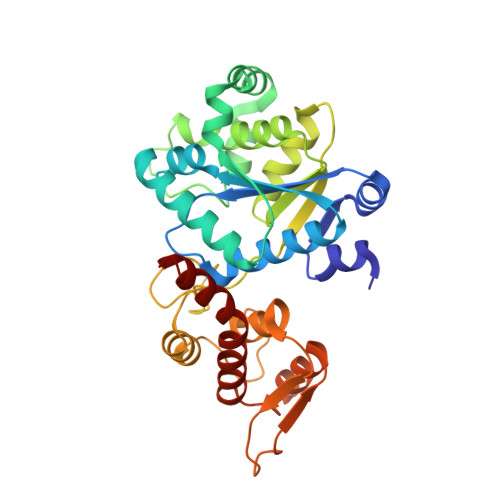Significant expansion of fluorescent protein sensing ability through the genetic incorporation of superior photo-induced electron-transfer quenchers.
Liu, X., Jiang, L., Li, J., Wang, L., Yu, Y., Zhou, Q., Lv, X., Gong, W., Lu, Y., Wang, J.(2014) J Am Chem Soc 136: 13094-13097
- PubMed: 25197956
- DOI: https://doi.org/10.1021/ja505219r
- Primary Citation of Related Structures:
4NX2, 4NXB, 4NXE, 4NXF, 4NXG - PubMed Abstract:
Photo-induced electron transfer (PET) is ubiquitous for photosynthesis and fluorescent sensor design. However, genetically coded PET sensors are underdeveloped, due to the lack of methods to site-specifically install PET probes on proteins. Here we describe a family of acid and Mn(III) turn-on fluorescent protein (FP) sensors, named iLovU, based on PET and the genetic incorporation of superior PET quenchers in the fluorescent flavoprotein iLov. Using the iLovU PET sensors, we monitored the cytoplasmic acidification process, and achieved Mn(III) fluorescence sensing for the first time. The iLovU sensors should be applicable for studying pH changes in living cells, monitoring biogentic Mn(III) in the environment, and screening for efficient manganese peroxidase, which is highly desirable for lignin degradation and biomass conversion. Our work establishes a platform for many more protein PET sensors, facilitates the de novo design of metalloenzymes harboring redox active residues, and expands our ability to probe protein conformational dynamics.
- Laboratory of RNA Biology, Institute of Biophysics, Chinese Academy of Sciences , Chaoyang District, Beijing, 100101, China.
Organizational Affiliation:

















